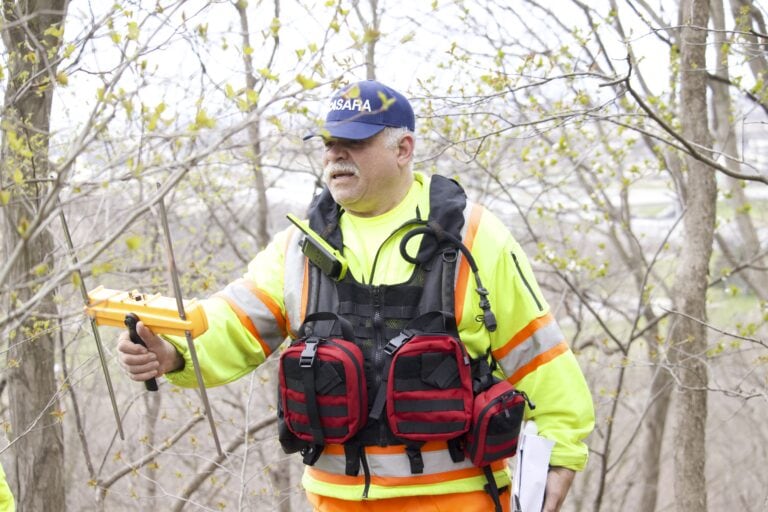Veterinarian still suspects toxic algae caused death of family's pup
The waterfront at Ryerson Park in Chautauqua was clear of blue-green algae when it was tested last week, according to the Ministry of the Environment and Niagara Region public health.
Tests were done at the small beach Wednesday after a dog died suddenly after swimming in the water a day earlier.
A veterinarian at Upper Canada Animal Hospital who examined the dog said the symptoms appeared to be toxic cyanobacteria, also called blue-green algae, which can be lethal to both dogs and humans. That diagnosis has not changed in the wake of the water test results, a spokesperson said this week.
The Town of Niagara-on-the-Lake said in a statement that tests from three samples indicated “no presence of blue-green algal bloom.”
The dog, a one-year-old border collie named Jack, appeared “brain dead” when it arrived at the vet clinic, said owner Conor MacNeill. The dog was put down by veterinarians shortly after.
In a statement Tuesday to The Lake Report, MacNeill was critical of a report in the St. Catharines Standard last Saturday that said the toxic algae had been ruled out in Jack's death.
“In speaking with the vet it was our understanding that this appeared to be a textbook case of blue-green algae poisoning, but there was no way of knowing definitively without an autopsy. The Ministry of the Environment official informed us they do not typically carry out autopsies, opting to focus on testing the area in question. So after discussing this article with the vet, it is still felt blue-green algae poisoning appears to be the most likely cause of death, based on the evidence available.”
“We understand that three samples of lake water were taken by the Ministry of the Environment from the beach at Ryerson Park and those tests for blue-green algae bloom came back negative, ruling out its presence at the time of testing.”
“However, this testing happened roughly 20 hours after Jack's death and ministry officials agreed that with the fluid nature of the lake and drastically different weather conditions, blue-green algae poisoning could not be ruled out as the cause of Jack's death, 20 hours prior.”
“This is a difficult time for our family and our intention in speaking out on this has solely been to make other dog owners aware of the potential dangers blue-green algae poses, particularly around this time of year, in the hope of helping avoid this happening again.”
Chautauqua resident Stephanie Tribe, whose children often play in the water, said she thinks it's more likely any toxic algae would have come from the nearby One Mile Creek, which is now covered with what appears to be green algae. The water in the creek is still, with little or no flow.
“As far as I know, blue-green algae is present in calm or stagnant water,” Tribe said. “I think it would be hard to bloom at the beach.”
She added she's been avoiding the beach because the creek “smells rancid.”
Tribe hopes there is more regular water testing done at Ryerson Park, noting there's been a significant increase in the number of people swimming there.
“It would be nice to have public testing now that a bazillion people swim there,” she said.
John Gleddie, president of the Chautauqua Residents Association, said the incident “is proof that we should have our water quality at Ryerson Park tested on a regular basis.”
Ross Robinson, a member of the association's board, said he is concerned that the town didn't put up signs until one day after the veterinary clinic made the announcement about the potential danger. He took it upon himself to go home and write his own sign. Another neighbour also put up a homemade sign.
The town initially placed signs on the backs of four park benches on Wednesday, but not near the stairs or pathway down to the water. Some people who were in the water that day said they did not see the signs before they went in. By Thursday, two days after the dog died, warning signs were posted at the beach entries.
“I was astounded that no one posted warning signs at the two entrances to the waterfront immediately after hearing about this sad incident,” Robinson said. “Town, regional and provincial health personnel seemed to be passing the buck, waiting for someone else to act.”
“Because of this shocking lack of action, people, including little children, were in the water soon after the dog was rushed to the vet. A friend saw at least two dogs swimming that evening.”
The town is reminding swimmers that testing is not done regularly at Ryerson Park because it’s “not a designated beach.”
In late July, after questions from The Lake Report about water quality and testing of NOTL lakefront beaches, the town said it would be erecting “educational” signs at Ryerson Park telling people what conditions could lead to high E. coli in the water.
Those signs finally went up last Friday.
They advise people to be careful about swimming in untested water, “especially in conditions that may promote the growth of bacteria such as: excessive heat, a large number of swimmers, wind and high waves, a large number of birds, recent heavy rainfall or cloudy appearance.”



.jpg)






